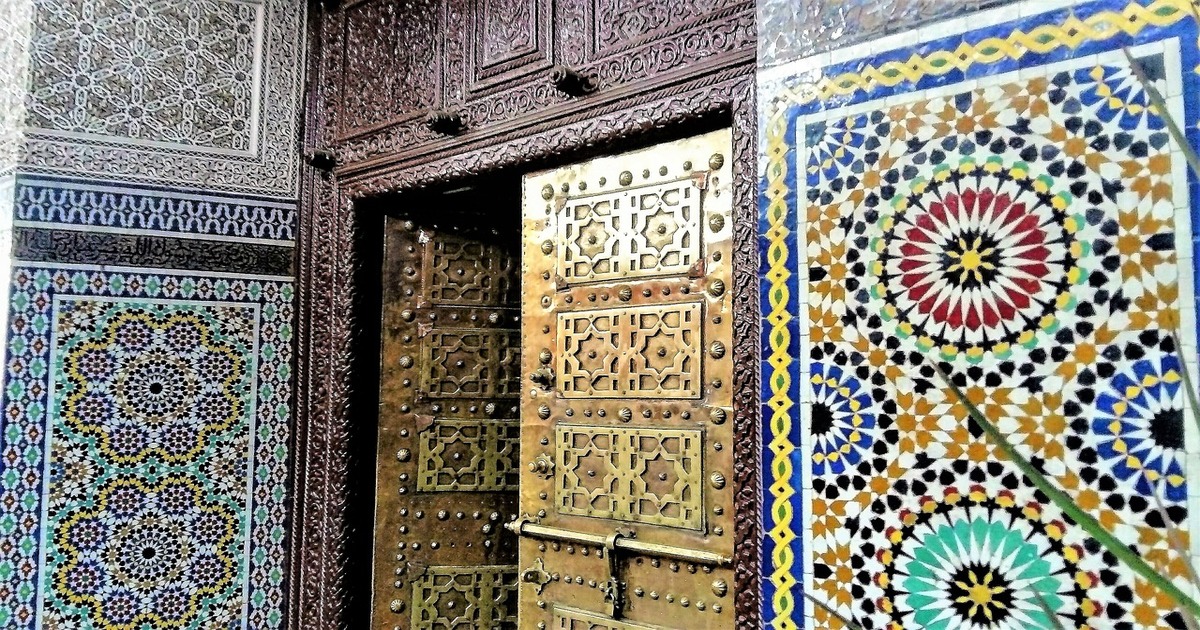A Tourist in Morocco
A first-hand account of the thrills — and frustrations — of visiting Morocco.
July 19, 2004

It is not supposed to be raining early in May at Morocco's border with the Spanish enclave of Ceuta.
But it is pouring, as we drag our bags to the final gate — only to be sent back again to get additional stamps in our passports. The right office is easy to find: Cars full of European tourists pack the road in front of it like a parking lot.
We try to submit our passports, but fall back in the free-for-all, with people aggressively pushing toward the functionary on the inside.
French vigor
The French move with special vigor, with the result that the less forceful tourists — two Americans, six Japanese and the young man from England who is studying at a madrassah in Marakesh — only arrive at the window after an hour, when the crowd has thinned.
Stamps applied, my wife and I finally walk into Morocco, following Hakim — the Englishman — who is haggling with the driver for a "grand taxi" to take the three of us to Tetouan, where we will catch the bus to Fez.
In some ways, the border is a microcosm of Morocco. There are officials everywhere, chatting among themselves and walking back and forth between offices.
Each small wave of tourists learns about the official procedures by trial and error. Some young Moroccan men volunteer to help, but beware: Once engaged, they are hard to disengage.
There are many offices — but all the border-crossing action seems to be squeezed into one small office, where work proceeds at a leisurely pace.
Morocco in the springtime
Morocco is an exceptionally beautiful country, especially during springtime, when fields are bright with wild flowers. The old walled cities with their intricate narrow streets offer a wonderful array of traditional crafts. And evenings are unforgettable.
It seems that everyone in town saunters through the streets, under flocks of swooping swallows, pausing for a leisurely glass of hot sweet mint tea at one of the innumerable teahouses.
Travel between cities by train or bus is cheap and usually comfortable and reliable.
With tens of thousands of Moroccans living and working in Europe — especially in France and Spain — there is a substantial flow of cultural information into the country.
What about the economy?
There is also a considerable flow of remittances of money, amounting to more than $3 billion per year — or about 10% of Morocco's GDP.
Yet Morocco is only plodding along economically, with a standard of living comparable to that in Jamaica or Sri Lanka. Income per person is growing modestly, increasing by only about 30% between 1980 and 2000.
That is less than the 50% average increase in income-per-capita in Europe over the same period. In other words, the wealth gap between Europe and Morocco — already substantial — is growing.
A hidden gem
With its wonderful mountains, beaches, cities, crafts and cuisine, Morocco should be a far stronger magnet for tourists than it currently is.
Culturally, there seems to be relatively little consciousness of European tastes outside Rabat, Casablanca and Tangier, although, of course, there are first class hotels and restaurants in many places.
The aggressiveness of the ubiquitous "guides" who offer their services to tourists — and the unhelpful officials, too — are not what one might expect in a population that is as close to Europe and as widely traveled as that of Morocco.
It may be that cultural pride and residual hostility to colonialism stand in the way of some sound business practices.
Indeed, a recent survey by the Pew Research Center suggests that in Egypt and Jordan, cultural cousins of Morocco, the local population is more averse to change than people in almost all other developing regions surveyed.
Attitudes favor existing social and economic arrangements and distrust forces for change — particularly those that have foreign or non-traditional roots.
Mixed emotions
As many splendid memories as I carry away from Morocco, I look back on our visit with mixed emotions. It is exhausting to be a tourist in Morocco. The civil — but unhelpful —functionaries at the border represent the officialdom the tourist encounters.
And virtually every gregarious Moroccan one meets — and there are many — has his eye on the dollar. This makes tourists distrustful and unfriendly, spoiling personal interactions.
To the ancient monuments — 2,000 year old Roman ruins, 1,000-year-old Arab and Berber kasbahs — add colonial and modern architectural gems, as well as the natural beauty of towering mountains, green agricultural plains and the Sahara, which we did not visit.
Clearly, Morocco is a country that should be swarming with visitors. But it is not. And as much as we enjoyed our visit, we will be selective in recommending Morocco to our friends.
